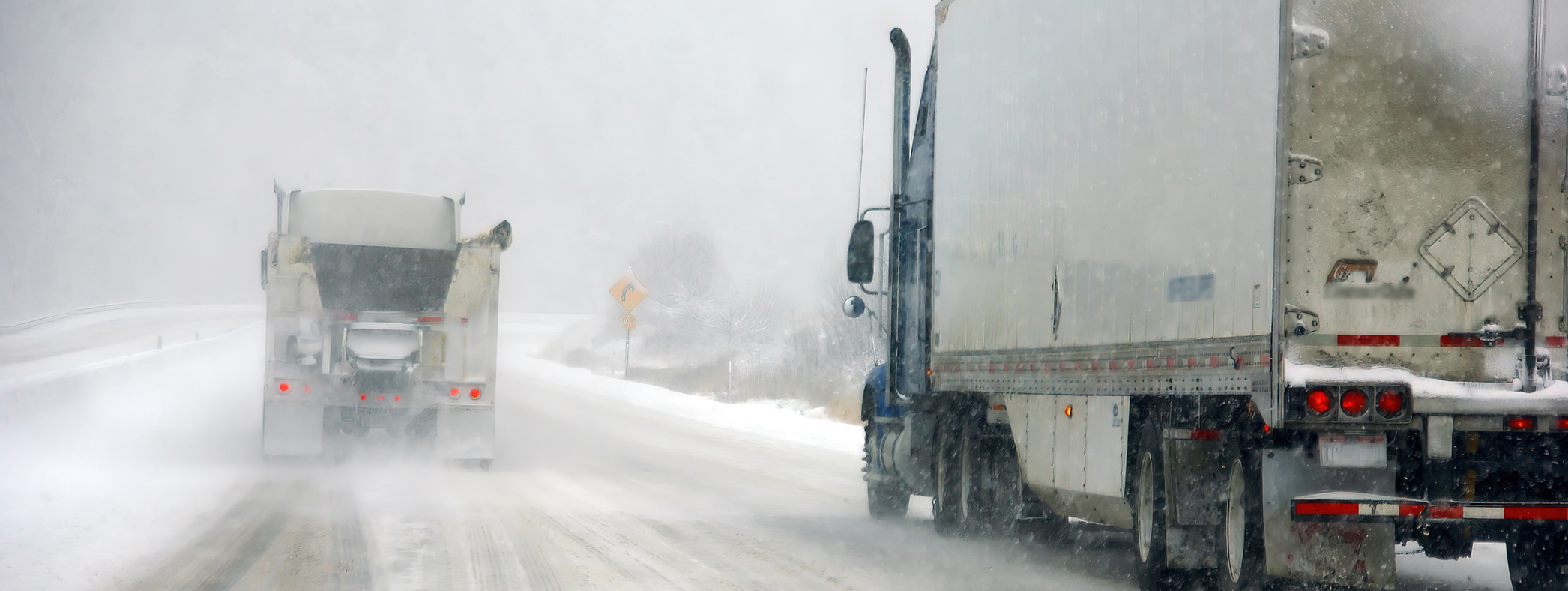As seasons shift, inclement weather follows that can pose serious hazards to drivers. On average, one in five crashes in the U.S. are weather related. That’s more than 1.2 million crashes out of 5.9 million that occur each year. Additionally, nearly 5,000 people on average are killed and over 418,000 people are injured in weather-related crashes each year.
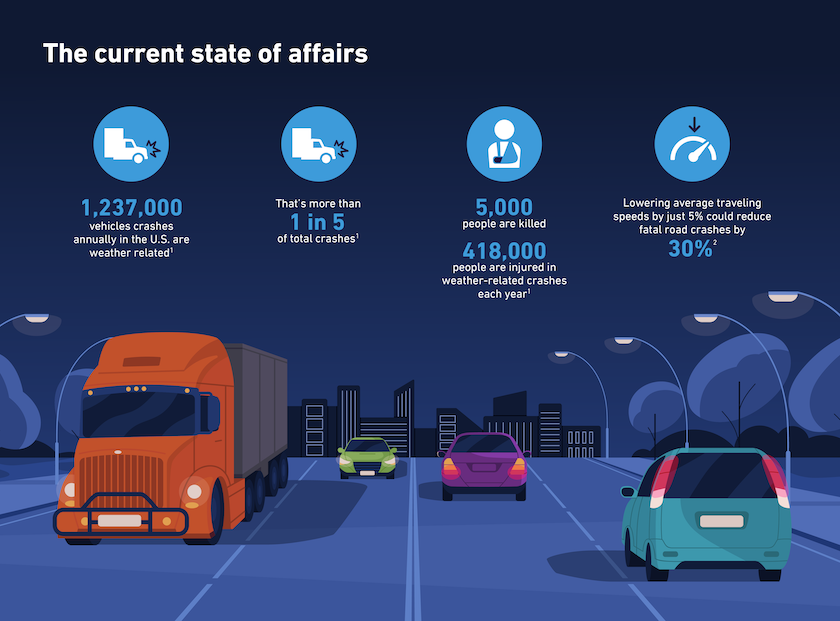
The Federal Highway Administration defines weather-related crashes as those crashes that occur in adverse weather – like rain, sleet, snow, fog, severe crosswinds, or blowing snow/sand/debris – or on slick pavement.
In this article, we break down how different weather conditions affect drivers and roadway incidents and how inclement weather hazards can impact fleet productivity. We also share tips to help fleets stay ahead of the weather and make proactive decisions for safety and efficiency on the road.
How does winter weather impact roadways?
As noted by the FHA, snow and ice on the roads can limit friction on the pavement. This can lead to less control of a vehicle, slower speeds on the road, and an increased risk of collision. In fact, speeds decline by 30% to 40% in snowy or slushy conditions, which can cause major traffic jams and collisions when speeds suddenly reduce.
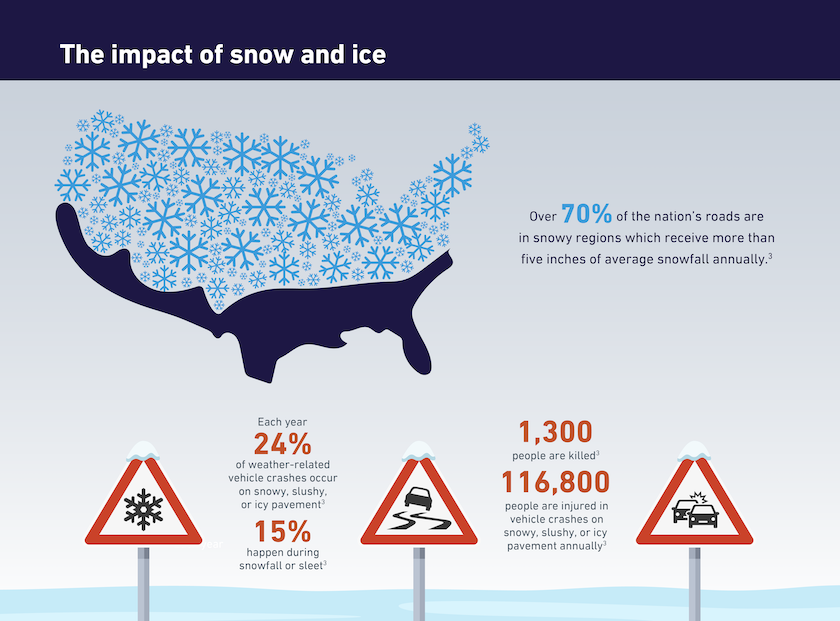
Additionally:
- Each year, 24% of weather-related vehicle crashes occur on snowy, slushy, or icy pavement, and 15% happen during snowfall or sleet.
- Over 1,300 people are killed and more than 116,800 people are injured in vehicle crashes on snowy, slushy, or icy pavement annually.
- Every year, nearly 900 people are killed and nearly 76,000 people are injured in vehicle crashes during snowfall or sleet. 70% of the nation’s roads are in areas that receive five or more inches of average annual snowfall.
With all this potential for accidents, it’s critical that drivers and fleets stay proactive to avoid weather-impacted routes when able.
Automated notifications can help keep fleet managers informed of emergent storms and severe weather. With
Weather Hazard Alerts, a new project from Lytx® Lab1, for example, fleet managers can set up real-time alerts based on geospatial and National Oceanic and Atmospheric Administration (NOAA) weather data to help facilitate faster decision making for safer more efficient driving. Alerts can be configured to cover instances of snow, thunderstorms, floods, tornados, and more.
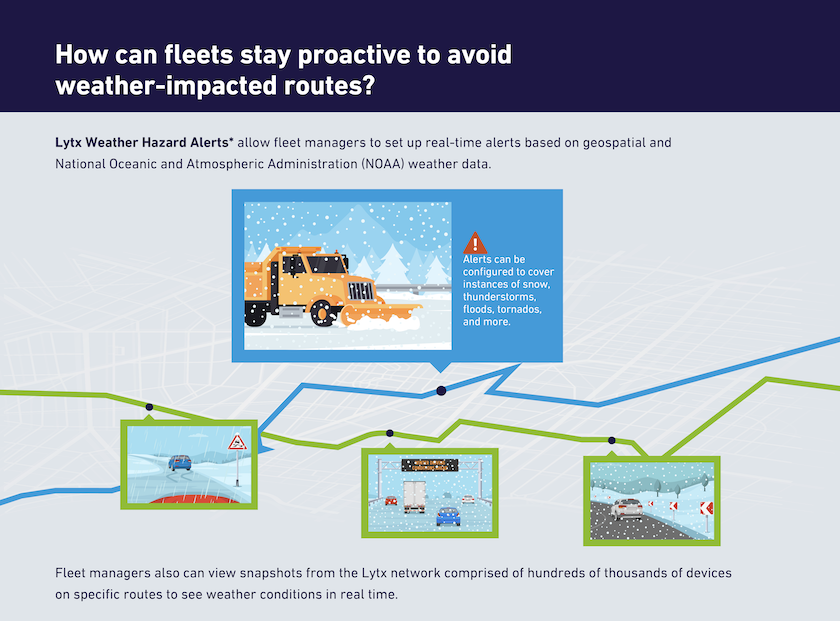
Fleet managers can view snapshots from the Lytx network which is comprised of hundreds of thousands of devices on specific routes to see weather conditions in real time, a first-of-its-kind innovation in the telematics and geospatial intelligence space that allows for more accurate condition assessment and smarter decision making.
Rainfall on the roadways
It may come as no surprise that the majority of weather-related crashes happen when the pavement gets slick, with 70% occurring on wet pavement and 46% during rainfall. Like snow, rain also limits vehicle traction and the driver’s ability to maneuver quickly. Rain also limits visibility, and a sudden onset of heavy rain can lead to unpredictable conditions on the road.
In fact, nearly 5,700 people are killed and more than 544,700 people are injured in crashes on wet pavement annually.
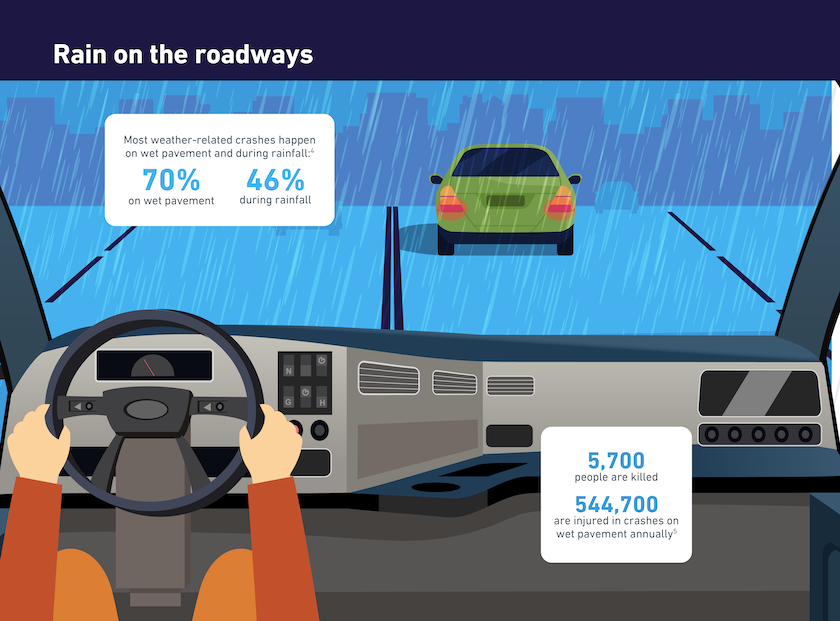
Heat and driver safety
While rain and snow are more obvious candidates for disruptive roadway weather, high heat days can put driver safety at risk and even lead to an uptick in crashes. A study by the National Institutes of Health found a significant association between fatal traffic crashes and heat waves, with a 3.4% increase in fatal traffic accidents on day with a heat wave compared to days without.
This may be because hotter conditions can lead to driver dehydration, drowsiness, and mood changes that can negatively affect the cognitive performance of a driver behind the wheel. Cars also trap heat quickly, making hot days even hotter if not properly cooled inside. Drivers who experience these physical and mental effects may drift out of lane more often, make larger steering adjustments, or just be slower to react to sudden roadway incidents.
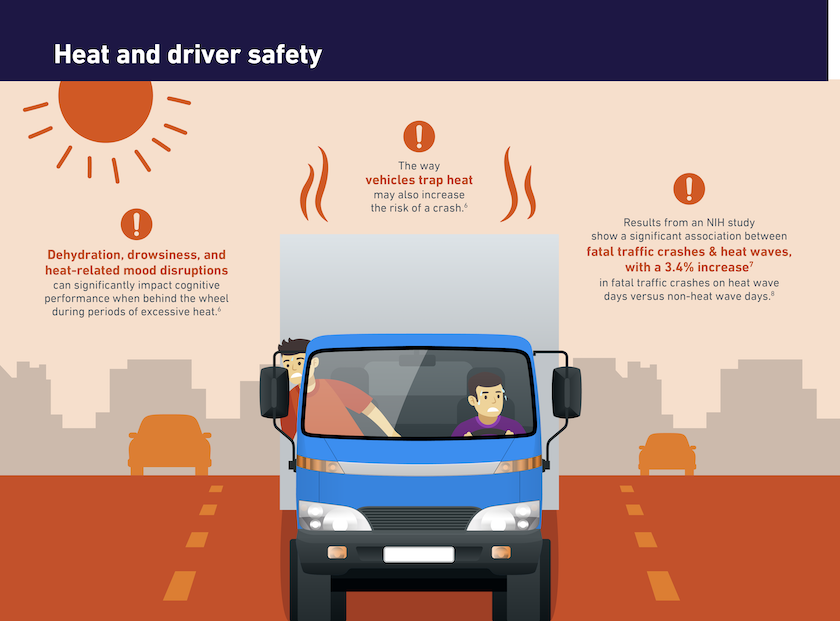
Adverse weather’s impact on fleet productivity
According to a study by Mitretek Systems, each year trucking companies lose an estimated 32.6 billion vehicle hours due to weather-related congestion. Almost 12% of total estimated truck delays are due to weather. The estimated cost of weather-related delays to trucking companies ranges from $2.2 billion to $3.5 billion dollars annually.
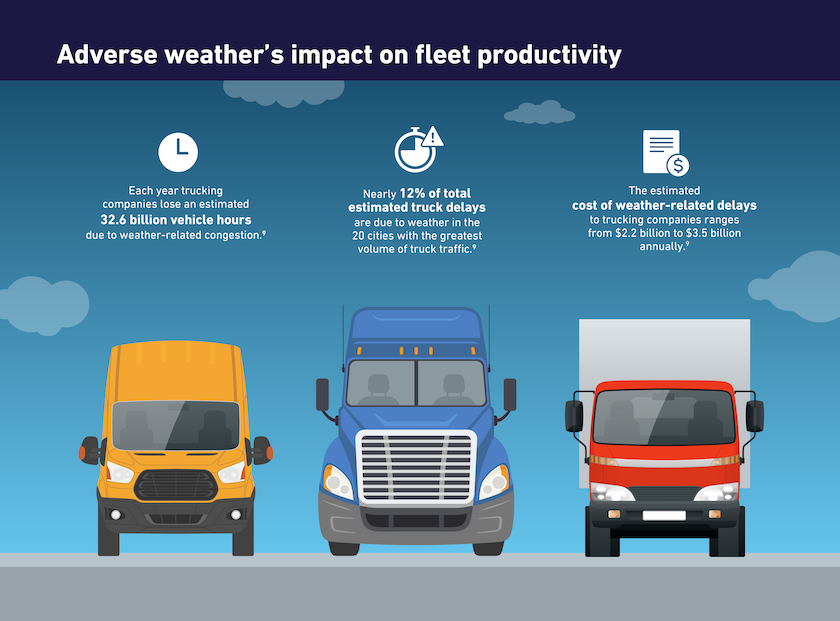
7 tips for safer driving through severe and sudden weather
Weather changes fast. If possible, it’s always best that drivers avoid inclement weather on the road for maximum safety. Lytx’s Weather Hazard Alerts can help facilitate proactive decision making with real-time alerts along with access to the Lytx camera network to view active road conditions on specified routes. But it’s always best to keep your fleet prepared for anything. These tips can reinforce any fleet’s existing safety program during inclement weather:
- Keep turn signals on longer than typical in low-visibility and rough weather
- Allow for more time to maneuver between lanes, around curves, and when getting on and off highways
- Reduce speeds by a third or more depending on the conditions
- Use more caution when on bridges, as they can accumulate ice faster than roadways
- Brake and accelerate slowly and with a lighter touch
- Take more time on any inclines or declines in the event of strong wind gusts
- Allow extra room between other vehicles to allow for more reaction time
If weather is too severe, it’s always best to play it safe. Drivers can be encouraged to find the nearest safe parking area and pull off.
Interested in trying out Weather Hazard Alerts for your fleet? The Lytx Lab, an idea incubator that allows our team to innovate in collaboration with our clients, helps to anticipate and solve the industry’s growing and changing needs.
You can be part of our product development process, influence new features, and get your hands on leading-edge technology before it’s released to the public. Contact us to learn more.
1Lytx Lab experiments are included as a service to our customers. Lytx Lab features are experimental in nature and are provided for informational purposes only. Access to Lytx Lab is made available to users at no charge as part of their service; however, some experimental features may require a subscription to specific Lytx products in order to provide the intended insights. Lytx Lab features may be added, altered, or removed without notice.
